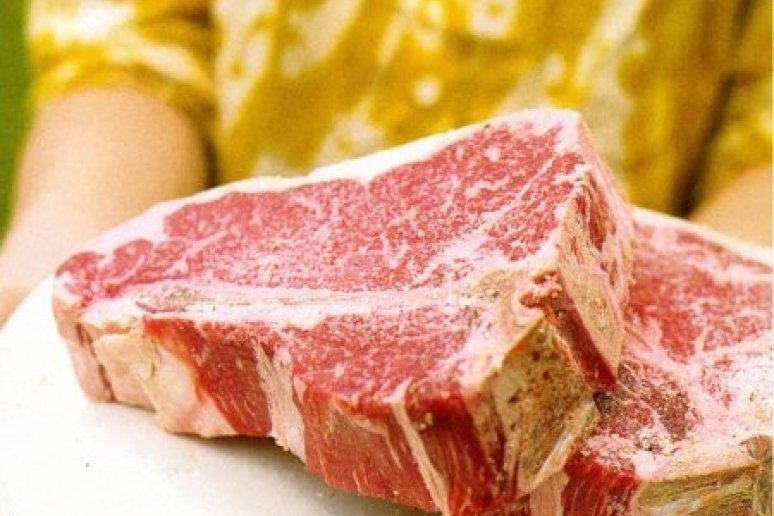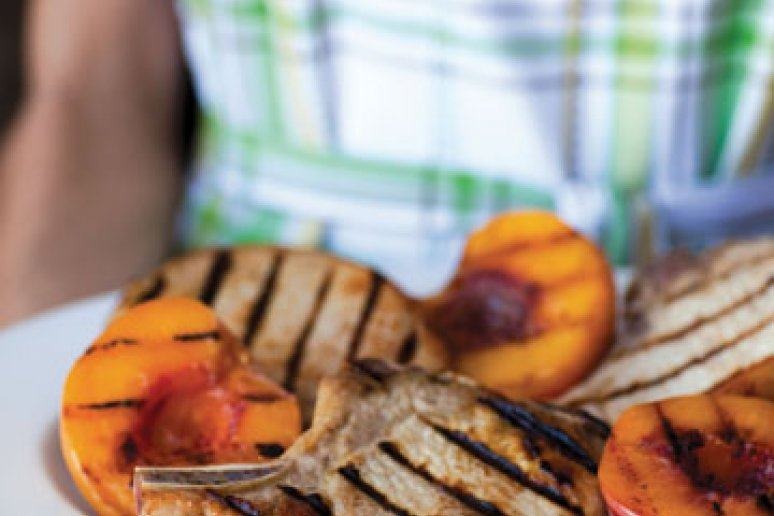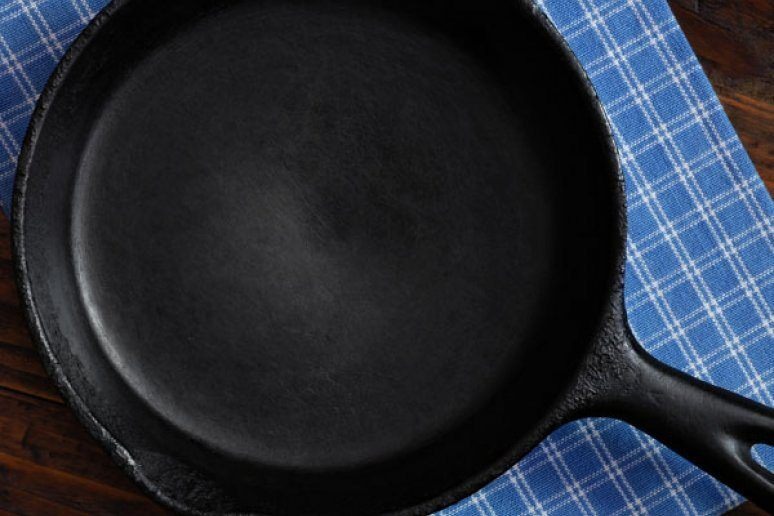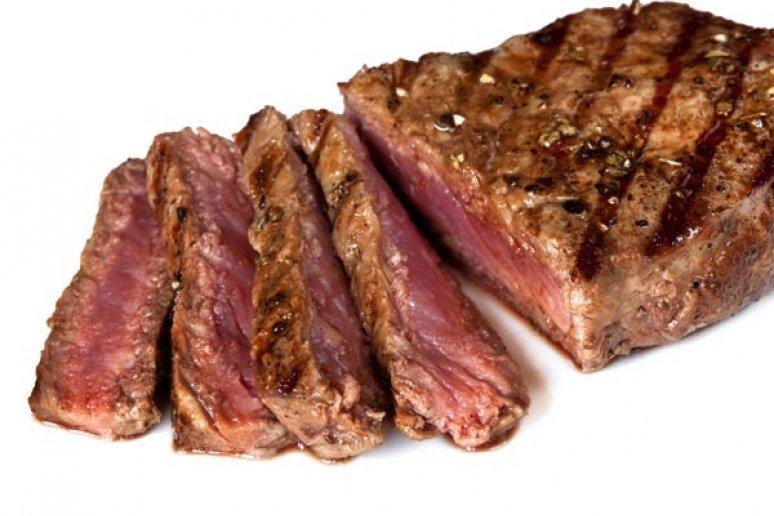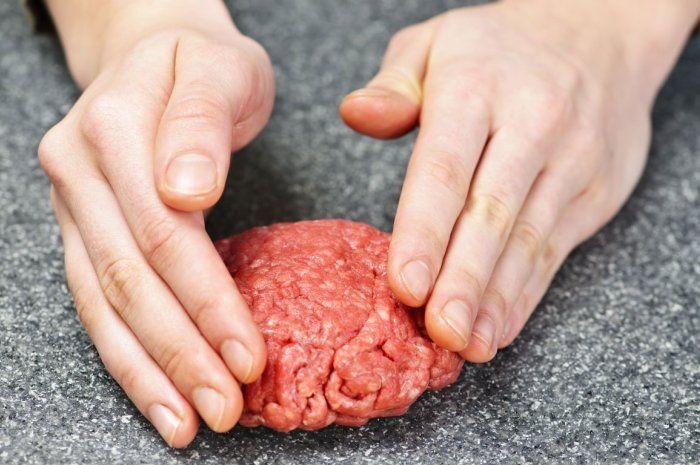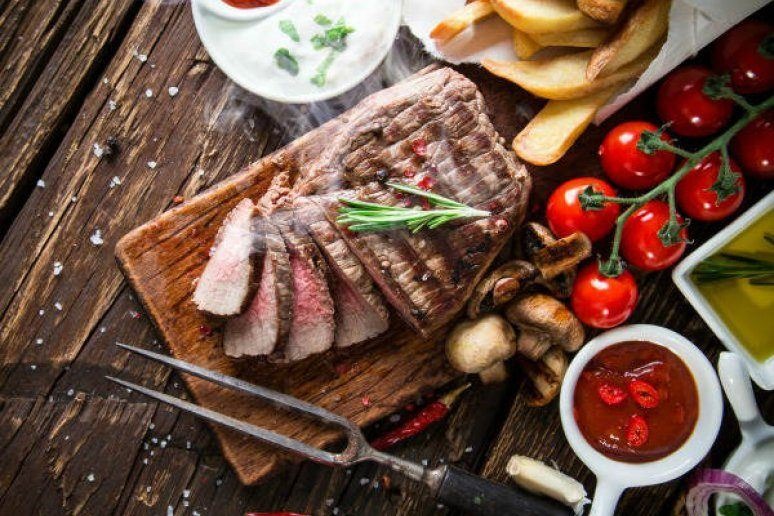How To Cook The Best Burgers, Dogs, And Other Summer Favorites Indoors
We may receive a commission on purchases made from links.
How to Cook the Best Burgers, Dogs, and Other Summer Favorites Indoors
We wait all year to be able to stand in the backyard in front of the grill, a cold drink in one hand, tongs or spatula in the other, with the hot summer sun beating down on us. The imagery is just plain cruel this time of year when the days are dark, the weather is cold and wet, and the majority of us are buried in a few feet of snow.
Some try to brave the elements to grill outdoors even in the chilly months, but for most — especially those confined to apartments — grilled food is an unattainable goal... or is it?
There are intrinsic components the grilling technique supplies: For flavors, the flame introduces smokiness and char, and texturally, grilled food develops amazing crispy edges. Luckily, it can all be replicated indoors.
There are logistical obstacles, of course, to indoor grilling (like smoke alarms and poor ventilation) and there is also the issue of equipment. PSA: Do not try to bring your charcoal or gas grill indoors. Instead, you can use your oven broiler, a torch, or a heavy cast-iron pan; there are even cast-iron grill pans that can give you those attractive grill marks.
Here we've outlined the essential equipment for grilling success and included seasoning and technical tips on how to make all your summer favorites indoors.
The Right Pan
The easiest way to get the proper "grilled" texture on food is to use a good pan. Cast iron conducts heat evenly and retains heat very well, making it ideal for browning everything from fish and meat to vegetables. A well-made stainless steel pan will also work well for this.
For the Grilled Country Pork Chops With Grilled Peach recipe, click here.
Tip: Use High Heat
Brown food is flavorful food. It was French chemist Louis Camille Maillard who first understood the science behind browned food when he discovered that the amino acids and sugars in food molecules change when food meets a temperature of 300 degrees Fahrenheit, transforming the color and developing new (awesome) flavor profiles. This is easily achieved outside on the grill and also indoors.
Begin by heating the pan over high heat, and then reduce the heat slightly; a smoking pan means your heat is too high. Be sure to pat the meat dry before placing it over the heat because dry heat means browning, whereas if you place a sopping marinated steak in a pan you'll be steaming the meat instead of searing it. Next, don't be fussy. If you want a good crispy crust, you'll have to wait for it. Also, don't risk moving your food too early, either it won't brown well or it could tear apart more delicate foods like chicken or fish will leave bits behind to burn.
Click here to read "Why Every Cook Needs to Understand the Maillard Reaction."
Getting Smoky
You can buy small smokers for indoor use, or you can introduce smokiness through seasoning. Sprinkle your food with smoked salt or use deeply flavored spices, like smoked paprika or chipotle (smoke-dried jalapeño) pepper. You can also use liquid smoke as a flavoring agent. Another option is to purchase pre-smoked meat.
For the Sweet and Smoky Chicken Over Quinoa recipe, click here.
Tip: Same Cooking Rules Apply Indoors and Out
Just because you aren't cooking on a conventional grill, doesn't mean the process changes. To get that char, season correctly, be mindful of the heat and temperature, and be patient!
Tip: Use a Thermometer for Meat
Although more experienced cooks can gauge doneness by simply touching the meat, use a meat thermometer to accurately test doneness.
Be Prepared for Mishaps
Perhaps cover or disconnect your smoke detectors (briefly!) and make sure you can ventilate through an open window. It may also be helpful to have a fan nearby to clear the smoke.
For the Grilled Sweet Potato With Cilantro Lime Dressing recipe, click here.
Getting the Right Texture
Grilling is about cultivating the right char and crust. Screw carcinogens — the flavor of char is too good to live without! There are a few ways to accomplish this indoors: 1. The oven. A quick trip under the broiler or a very hot oven can sear a piece of meat, cook a piece of fish to perfection, and even give your food a kiss of delicious char. 2. Pan-frying. High heat and patience in a good pan can brown food very efficiently. 3. A kitchen torch. Yes, we are asking you to (carefully) play with fire here; use a torch to give a beautiful dark and crispy char to your food.
Click here to read "How to Cook Steak Perfectly Every Time: Kitchen Secrets from 17 Chefs."
Tip: The Flip
When cooking food that needs to be flipped (burgers, steak, chicken, fish) flip the meat onto a new, unused section of the pan, if possible. The heat will be hotter in the new location versus the place your food just occupied, thereby ensuring that the flipped side gets the proper attention, too.
Click here to read, "10 Easy Tips for Making the Perfect Burger."
Tip: Don’t Forget the Rest Time
It took a lot of effort to get that perfectly grill-like flavor and texture on your meat, so don't ruin it by slicing into it too quickly. Let the heat and juices absorb and disperse evenly and then slice against the grain.
